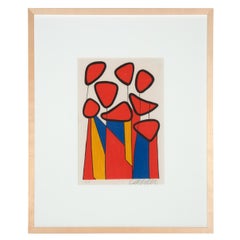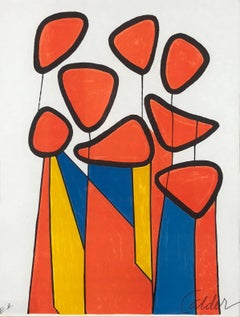Squash Blossom Alexander Calder
Recent Sales
Alexander Calder "Squash Blossoms" Signed Lithograph Artist Proof 1970s
By Alexander Calder
Located in Oxnard, CA
Alexander Calder (1898-1976)
"Squash Blossoms" lithograph, circa 1973
Artist proof
Newly framed: 22
Category
Vintage 1970s French Mid-Century Modern Prints
Materials
Paper
Squash Blossoms
By Alexander Calder
Located in Missouri, MO
Calder and the grandson of Alexander Milne Calder, well-known sculptors of public monumental works. His
Category
Late 20th Century American Modern Abstract Prints
Materials
Lithograph
Get Updated with New Arrivals
Save "Squash Blossom Alexander Calder", and we’ll notify you when there are new listings in this category.
Read More
Renowned for His Mobiles, Alexander Calder Was Also Adept at Crafting Modernist Jewelry
There are no sparkling gemstones on this necklace, but its value far exceeds the cost of its materials.
10 Must-Visit American Public Sculptures
Get your dose of Vitamin D while surveying works by the likes of Alexander Calder, Keith Haring and Pablo Picasso.
Pop Quiz: Alexander Calder
Celebrate Alexander Calder's birthday by seeing how well you know the artist's work

